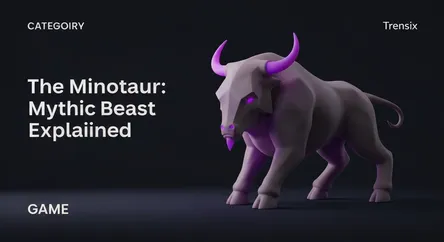Game
The Minotaur: Mythic Beast Explained

Discover the legendary Minotaur, the half-man, half-bull from Greek mythology. Learn why this labyrinth-dwelling beast is a popular boss in video games.
What is it?
The Minotaur is a monstrous creature from Greek mythology with the head and tail of a bull and the body of a man. According to legend, it was the offspring of Queen Pasiphae of Crete and a bull. Imprisoned by King Minos within the Labyrinth, an elaborate maze, it was fed a tribute of youths and maidens from Athens. The hero Theseus eventually navigated the Labyrinth and slew the creature. This iconic beast symbolizes savagery, imprisonment, and a formidable challenge hidden within a complex puzzle.
Why is it trending?
The Minotaur is a perennial favorite in fantasy games due to its intimidating presence and mythological roots. Its simple yet powerful concept makes it an ideal template for a tough enemy or a major boss. Games like God of War, Assassin's Creed Odyssey, The Elder Scrolls, and the classic Dungeons & Dragons feature minotaurs as powerful adversaries. Their association with labyrinths also provides a ready-made level design, challenging players with both combat and navigation. Its recognizable form makes it an easy-to-implement and instantly understood threat.
How does it affect people?
For gamers, the Minotaur represents a classic test of strength and strategy. Encounters are often designed as memorable boss battles that demand skill and perseverance, making victory feel highly rewarding. The creature evokes feelings of dread and excitement, embodying the 'brute force' archetype of fantasy monsters. Symbolically, facing a minotaur in a maze can mirror a player's journey through a game's complex challenges, representing the overcoming of a powerful, primal obstacle to achieve progress and heroism.